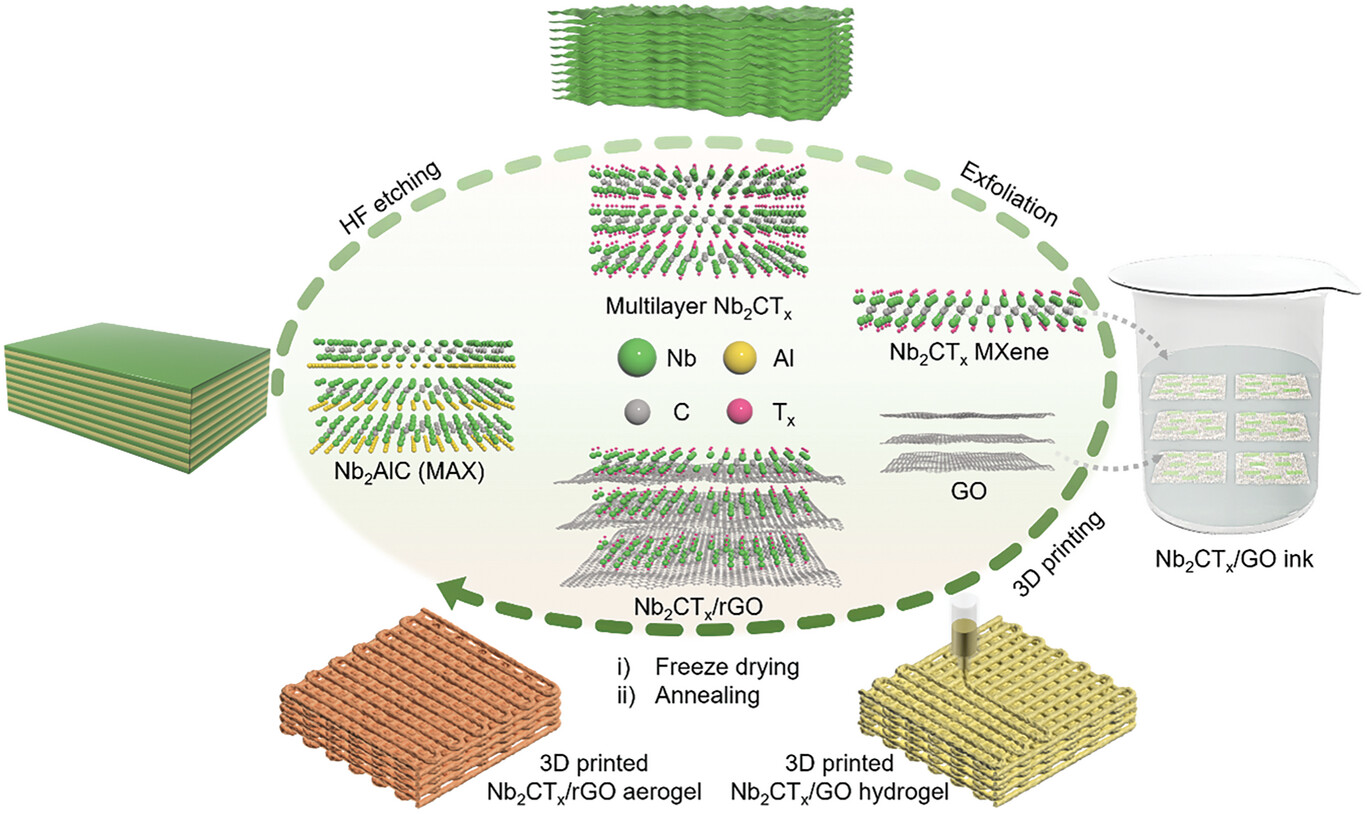Y.Y. Liu, H. Wang *, D.H. Pan, J.R. Hou, J.J. Yao, D.Z. Kong, T.T. Xu, Y.M. Shi, X.J. Li, H. Y. Yang *, Y. Wang * and Z.-S. Wu
Advanced Functional Materials, 2024, 2405460.
DOI: 10.1002/adfm.202405460 [PDF]

As a promising anode material for Na-metal batteries, the practical application of Na metal is severely hindered due to the formation of the notorious dendrite and unstable solid-electrolyte interface (SEI). To address these issues, a direct-ink writing (DIW) 3D printing technology is proposed to construct an artificial 3D hierarchical porous sodiophilic Nb2CTx/reduced graphene-oxide (Nb2CTx/rGO) aerogel monolith, which is employed as the matrix of Na metal anode. Benefiting from the homogeneous ion flux and exceptional sodiophilic features, the Nb2CTx nanoflakes embedded within the 3D scaffold regulate the uniform deposition of metallic Na with a stable SEI layer, achieving an ultralong cycle lifespan of 3000 h at 1 mA cm−2 with 1 mAh cm−2 and an impressive Coulombic efficiency of 99.68% over extended lifespan of 7064 h. Further, the in-depth characterization analysis proves that the formed stable SEI layer consists of an inorganic NaF accumulated in the inner layer and loosely-bound organic species in the outer layer. Remarkably, when integrated into a Na metal full cell, the reversible capacity reaches 90.22 mAh g−1 after 200 cycles at 100 mA g−1. The work provides a promising strategy to utilize Na metal anodes with long cycle lifespan for next-generation sodium metal batteries.